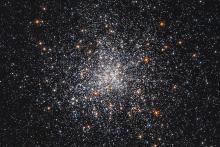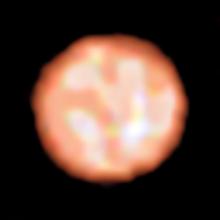Listen to today's episode of StarDate on the web the same day it airs in high-quality streaming audio without any extra ads or announcements. Choose a $8 one-month pass, or listen every day for a year for just $30.
You are here
Serpens
The sky is divided into 88 constellations. Actually, though, it’s more like 88 and a half. That’s because the constellation Serpens consists of two disconnected parts — a head and a tail. They’re separated by the serpent bearer as they wrap behind his body.
Serpens is in full view in the east and southeast by a couple of hours after sunset. The half that represents the head is highest, above Ophiuchus, with the tail below the serpent bearer.
The front half of the snake, Serpens Caput, is the more prominent one. It has several stars that are fairly easy to see. The brightest is Alpha Serpentis, also known as Unukalhai — “the serpent’s neck.” It’s a red giant — an old, bloated star that’s much bigger and brighter than the Sun. Its surface is much cooler than the Sun’s, so the star looks yellow-orange.
The back half of the snake, Serpens Cauda, is tougher to spot. Its brightest star, Eta Serpentis, is actually the second-brightest star in the whole constellation. It’s about half as bright as Alpha. But the two stars are quite similar. Eta is also a giant — a puffed-up star that’s nearing the end of its life. It’s not as far along as Alpha, though, so it’s not quite as big or as bright. But as it evolves, it’ll get much bigger and brighter than Alpha.
And the stars will end their lives in the same way. Each will cast its outer layers into space, leaving behind a hot but tiny corpse known as a white dwarf.
More about the serpent tomorrow.




